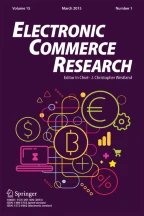Abstract
This paper describes a protocol to protect data collected by mobile agents roaming through a set of potentially malicious hosts. This protocol is based on an original secure cryptographic technique that assures the integrity of a sequence of data segments regardless of the order of each segment in the sequence. The protocol allows each host to update the data it previously submitted in a way that is suitable for free competition scenarios like comparative shopping or distributed auction and for highly dynamic environments like stock markets. The set of hosts can be visited several times in random order and a short message digest allows for the integrity verification of all the collected data.
Similar content being viewed by others
References
Bellare, M. and B. Yee. (1997). “Forward Integrity for Secure Audit Logs.” Technical Report, University of California at San Diego, Department of Computer Science and Engineering.
Biehl, I., B. Meyer, and S. Wetzel. (1998). “Ensuring the Integrity of Agent-Based Computations by Short Proofs.” In K. Rothermel and F. Hohl (eds.), Proc. of the 2nd Internat. Workshop, Mobile Agents 98, Lecture Notes in Computer Science, Vol. 1477. New York: Springer, pp. 183–194.
Chess, D., C. Harrison, and A. Kershenbaum. (1997). “Mobile Agents: Are They a Good Idea?-Up-date.” In Mobile Object Systems: Towards the Programmable Internet, Lecture Notes in Computer Science, Vol. 1222. New York: Springer, pp. 46–48.
Diffie, W. and M. Hellman. (1976). “New Directions in Cryptography.” IEEE Transactions on Information Theory 22(6), 644–654.
Guttman, R., A. Moukas, and P. Maes. (1998). “Agent-Mediated Electronic Commerce: A Survey.” Knowledge Engineering Review.
Hagimont, D. and L. Ismail. (1999). “A Performance Evaluation of the Mobile Agent Paradigm.” In Proceedings of the Conference on Object-Oriented Programming, Systems, Languages and Applications, Denver, USA, pp. 306–313.
Karjoth, G., N. Asokan, and C. Gulcu. (1998). “Protecting the Computation Results of Free-roaming Agents.” In K. Rothermel and F. Hohl (eds.), Proc. of the 2nd Internat. Workshop, Mobile Agents 98, Lecture Notes in Computer Science, Vol. 1477. New York: Springer, pp. 195–207.
Koblitz, N. (1994). A Course in Number Theory. Berlin: Springer.
Loureiro, S. and R. Molva. (1999). “Function Hiding Based on Error Correcting Codes.” In M. Blum and C.H. Lee (eds.), Proceedings of Cryptec'99-Internat. Workshop on Cryptographic Techniques and Electronic Commerce, City University of Hong-Kong, pp. 92–98.
Loureiro, S. and R. Molva. (2000). “Mobile Code Protection with Smartcards.” In 6th ECOOP Workshop on Mobile Object Systems, Cannes, France.
Necula, G.C. (1997). “Proof-Carrying Code.” In Proceedings of the 24th ACM Symposium on Principles of Programming Languages, Paris, France, pp. 106–119.
Rivest, R.L. (1992). “The MD5 Message-Digest Algorithm.” Internet Request for Comments RFC 1321.
Sander, T. and C. Tschudin. (1998). “Towards Mobile Cryptography.” In Proceedings of the 1998 IEEE Symposium on Security and Privacy, Oakland, CA, pp. 215–224.
Yee, B. (1997). “A Sanctuary for Mobile Agents.” Technical Report CS97–537, Department of Computer Science and Engineering, University of California at San Diego.
Author information
Authors and Affiliations
Rights and permissions
About this article
Cite this article
Loureiro, S., Molva, R. & Pannetrat, A. Secure Data Collection with Updates. Electronic Commerce Research 1, 119–130 (2001). https://doi.org/10.1023/A:1011527713457
Issue Date:
DOI: https://doi.org/10.1023/A:1011527713457
